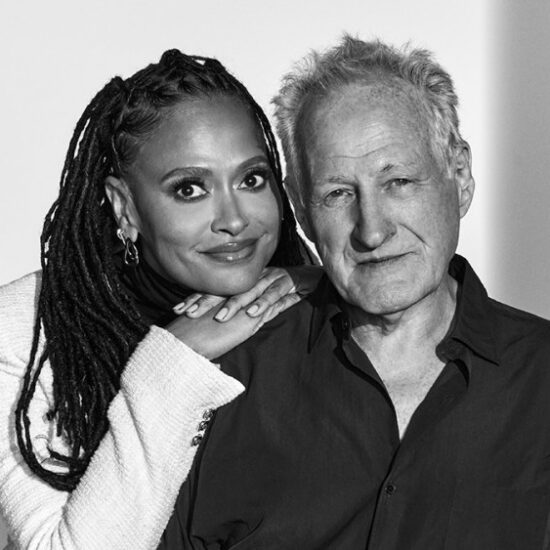
If the original was a journey into a moviemaking dreamworld, this “Irma Vep” is a more mischievous view of what it takes to tell a story in the 2020s.
It really is a miracle that any filmed piece of art ever gets made. Widen out the scope and scale of a film or a series (or any any other time-dictated variation thereof) and the sheer number of people that have to work together to get a project from an idea to a reality only seems to get more staggering as time goes on.
So it’s fitting that Olivier Assayas, in a fresh spin on his 1996 film “Irma Vep,” uses a new version of a similar story to soak in all the disparate elements that have to come together in order for a project to exist. Like its predecessor, this “Irma Vep” uses the entrance of its lead actress as a gateway to all the swirling interpersonal tensions that go into any kind of filmed story. American actress Mira (Alicia Vikander), fresh off of a press tour for a massive blockbuster, finds herself settling into the main role in a modern remake of seminal early 20th century French serial “Les Vampires.” She’s also stepping into one psychological minefield (a set run by a deeply insecure filmmaker) after barely escaping another (a pair of messy breakups). Mira is far better at shielding her anxieties than director René Vidal (Vincent Macaigne, playing another character reimagined from their 1996 form).
It would be easy for this to become a flippant exercise in self-awareness, a vehicle for industry potshots cloaked in an “IP, but make it A24” veneer. Given the quarter-century time gap since his last “Irma Vep,” it also wouldn’t be shocking for this to be an Assayas-centric, self-absorbed therapy session in eight hourlong chunks. The feat of this “Irma Vep” is that it shrewdly stirs in handfuls of each while maintaining an overall flavor decidedly in its own third category.
“Irma Vep”
Carole Bethuel/HBO
Part of the enduring charm of the 1996 film is that, through not-Maggie Cheung Maggie Cheung as a conduit, making movies is positioned as a kind of hazy magical dream that toys with the very fabric of identity. Whether grizzled by career experiences or as a response to telling this story in a different medium with a much longer runway, Assayas brings a more clear-eyed approach to this “Irma Vep” series. These dramatized “Les Vampires” scenes aren’t as much a product of creative symbiosis as much as they are a series of happy accidents that exist despite the simmering tensions on- and off-set.
However workmanlike they can be in execution and however much the people involved see it as mainly an avenue to a paycheck, these stories don’t exist without at least some conversations about the nature of art or the integrity of the medium or the vision of the people at the top of a project’s creative hierarchy. “Irma Vep” has all those, but it’s acknowledging that it’s a mistake to ascribe that much intent and control to a process that is inherently driven by chance. These stories are told by deeply fallible people who get distracted by desire, get flustered by Mother Nature’s lack of cooperation, and make ill-advised choices about how late to stay out the night before a big day at work.
So “Irma Vep” becomes a story about how to care without being precious, something that extends far beyond these characters’ on-set lives. Vikander deftly treads a delicate line between showing Mira at a certain remove (from friends, exes, co-stars, and employees) without ever coming across as completely checked out. If “Irma Vep” ’96 is a quintessential Ship of Theseus, swapping and refitting planks until it’s impossible to say where performer ends and performance begins, Vikander, through Mira, is an actress who can conjure a sea-ready vessel at will for whatever each new situation demands.
She’s also a main vector for this “Irma Vep” and its more mischievous side. Assayas follows a narrative pipeline that travels from behind-the-scenes context to original 1915-16 footage to 2022 update. It’s often a prelude to an undercut, with Assayas presenting an idealized version of this classic story before gleefully bursting the illusion. Even when “Irma Vep” isn’t focusing on the incremental absurdities that happen while René is trying to wrangle order from slow-moving chaos, Assayas finds a pace to the off-camera conversations that playfully flow from one scene to the next, with some pitch-perfect buttons along the way.

“Irma Vep”
Carole Bethuel/HBO
Part of that ease and rhythm comes from Assayas working with a main cast peppered with prior collaborators. Macaigne and Nora Hamzawi (as “Les Vampires” 1st AD Carla) follow up their “Non-Fiction” appearances with a pair of roles that occupy every shade between despair and savviness. The characters may be pitched differently (and one may get a greater share of attention), but they do work in tandem over the course of the series. And amidst a bevy of would-be scene-stealers, Lars Eidinger is the hurricane that sweeps through them all. As the hedonistic and often-crass Gottfried, he vapes and provokes his way through trailers and post-wrap living room soirees with a magnetic ease. Seeing him flip the on switch in his “Les Vampires” scenes is all you need to understand how the same poisoned charm can make a performer like Gottfried simultaneously enticing, off-putting, and the only man for the job.
Ultimately, this “Irma Vep” is just as much about the rehearsal as it is the final product. Not only is expanding the number of scenes with René and the cast going over blocking a shrewd way to explain “Les Vampires” to the uninitiated, it reinforces the idea that everyone in this exercise is performing. That also goes for the therapy scenes, where René is exorcising his personal reticence about “Irma Vep” as a concept. (At least part of it is likely Assayas’ too, given each new bit biographical overlap between him and the character he’s refashioned partly in his image.) And while there are many elements of this new “Irma Vep” that rhyme with its predecessor (the handwritten credits, the after-hours rides through the city), part of the thrill of these eight episodes is seeing Mira in her own moments of discovery once she dons her own suit.
In those ways, Assayas is offering up an intentionally messy treatise on who has ownership over the creative process. Is it dictated by the century-old visual stylings of an early genre work? Is it controlled by a bundle-of-nerves director still wrestling with a previous version of this same vision? Is it inherently compromised by the modern demands of integrated marketing and corporate financiers? Is it guided by the whims of former lovers still leaving a psychological scar in their absence? Or is it all an illusion, created piece by piece by producers and costume designers and every manner of craftspeople, each with contributions guided by desires and insecurities of their own? “Irma Vep” isn’t offering a direct answer, but a knowing smile instead, providing enough information for anyone watching to draw their own conclusions.
Grade: A-
“Irma Vep” airs Monday nights at 9 p.m. on HBO. Episodes will also be available to stream on HBO Max.
Sign Up: Stay on top of the latest breaking film and TV news! Sign up for our Email Newsletters here.














